LAST UPDATED: 2/1/24 – Machu Picchu Photography Guide
Machu Picchu is both an architectural marvel and a stunning piece of artwork wrapped up into one iconic travel destination. Considered one of the new wonders of the world, Machu Picchu is one of the world’s most recognizable places.
Because of its beauty, tourists flock to Machu Picchu each year to get a glimpse of it firsthand. Many with the ambition to try and capture its essence in photographs. However, capturing this beautiful place in photographs is not without its challenges.
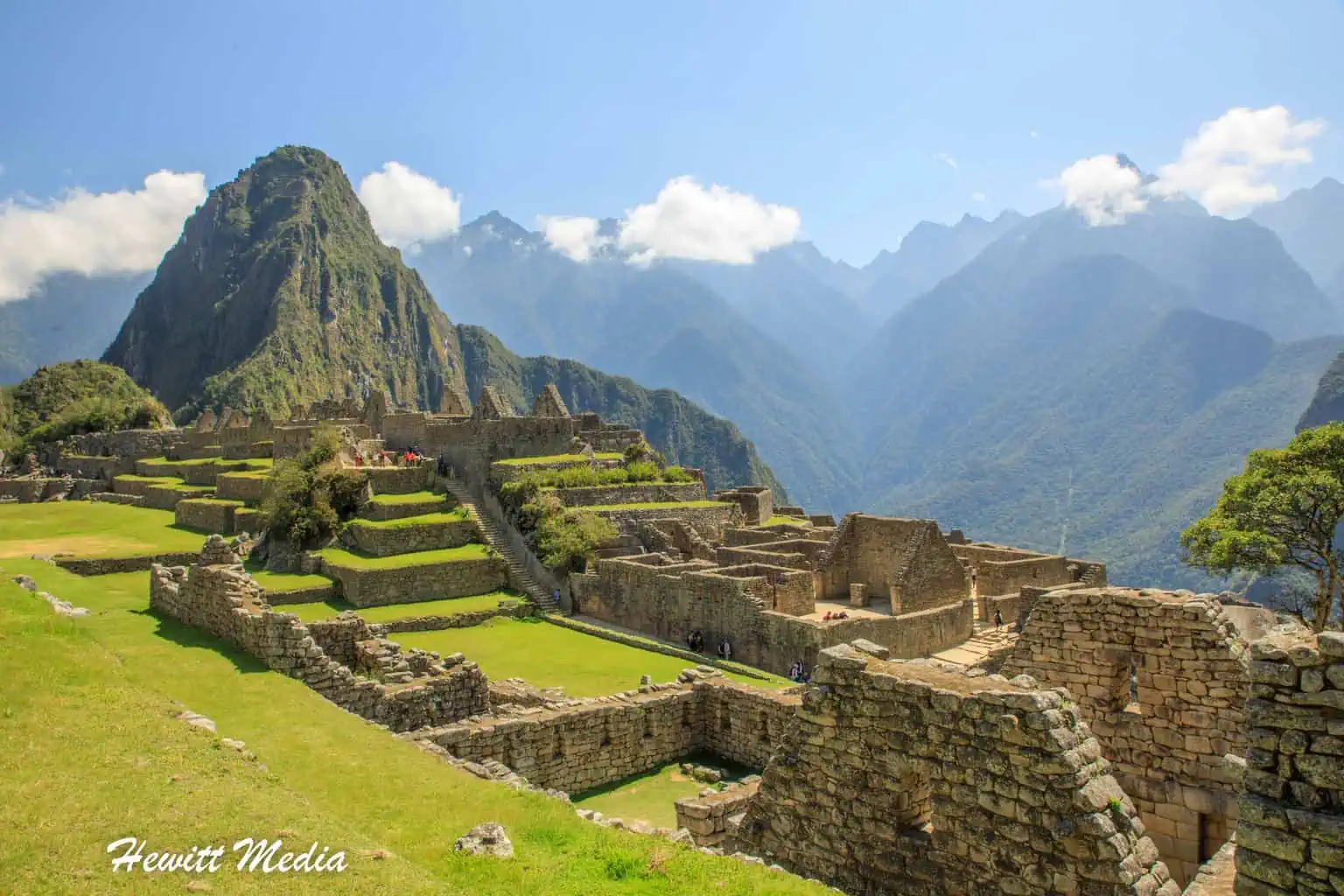
In this Machu Picchu photography guide, I am going to share some of my tips and tricks with you. Many of these tips I discovered by photography Machu Picchu myself in my travels.
In addition, some I learned from other photographers while preparing for my own trip. I will cover some of the do’s and don’ts of photographing at this site. This is important, as there are specific rules for photographing at the site.
I will also discuss some tips I have on where to photograph at Machu Picchu. By following these tips, you can capture the best images of this incredible place. Finally, I will touch on some of the equipment I recommend.
More importantly, I will let you know which photography gear you aren’t allowed to bring to Machu Picchu. By using this guide, you’ll know what to pack in your bag when you head off for your adventure.
Machu Picchu Photography Guide Navigation Menu
 |
Machu Picchu Photography Do’s and Don’ts | |
| Machu Picchu Photography Tips | ||
| What Photography Gear to Bring | ||
Machu Picchu Photography Guide – Do’s and Don’ts
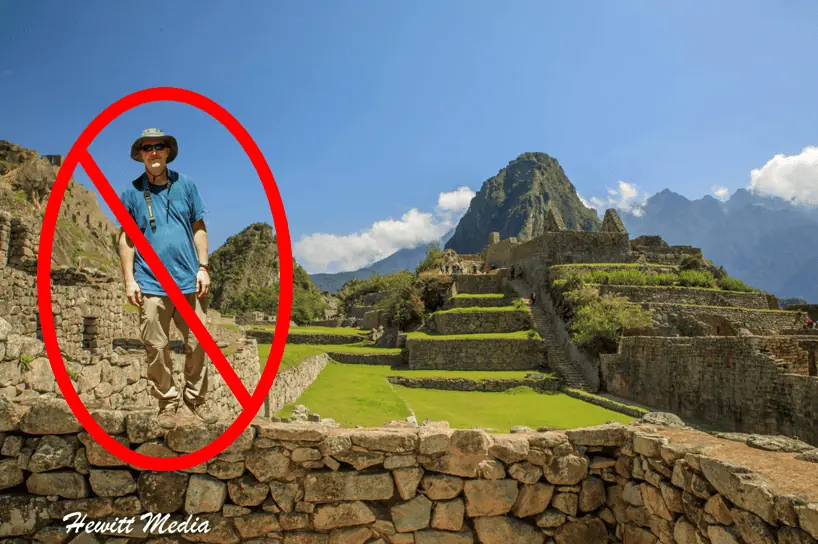
This is the most important tip I can give you in this Machu Picchu photography guide. When visiting Machu Picchu to take pictures, you need to make sure you don’t violate any of the rules concerning photography at the site.
The last thing you want is to be asked to delete your photos or leave because you violated a rule. So please, read this section carefully and make sure you respect the rules that are in place.
Be Careful of the Gear You Bring
While photography gear is allowed inside Machu Picchu, anything deemed to be “professional” gear will require a permit. This includes both photography and videography gear. If you do want to bring this type of gear in, you will need to pay for a permit. When I visited, I brought the following gear in with me:
- Canon 5d Mark IV
- Canon EF 24-105mm f/4L IS USM Lens
- Canon EF 70-200mm f/2.8L IS III USM Lens
I walked in with the camera around my neck and the 24-105mm lens on the camera. The 70-200mm lens. I kept it inside my bag. I had no issues at all going into Machu Picchu with this gear.
What I think will give you issues is if you have multiple camera bodies with you. That, or video stabilization gear, an external microphone, or a large tripod. Anything that can be construed as professional gear will be an issue. If you have a long lens, I recommend keeping it in your bag when you enter. Instead, leave your wide-angle lens on your camera body until you get to the site.
No Creative Photography Allowed
One of the rules that is strictly enforced within Machu Picchu is the prohibition of any creative photography. This means you aren’t able to bring any props or changes of clothing with you for the purpose of photography. Not only that but you also aren’t allowed to stage any scenes for your photographs. However, that doesn’t mean you can’t be creative. Later in this Machu Picchu photography guide, I give you some tips on this.
You must remember that this is a sacred site and thus should be treated with proper respect. This means that you shouldn’t be changing your clothes while inside Machu Picchu. More importantly, you certainly shouldn’t be moving things at the site to stage a photograph.
Be Aware of Bag Restrictions
Another thing you need to be aware of before visiting Machu Picchu is the bag size restrictions. This is important if you plan to bring a backpack into the site to carry camera equipment or other gear. Any bag that is over 40x35x20cm will not be allowed into the site. Larger bags will need to be checked at the gate.
So, if you are planning on bringing a bag with you, make sure it is smaller than these dimensions. For a backpack, I recommend the Lowepro Fastpack BP 150 AW II – A Travel-Ready Backpack. In my opinion, it is the perfect size. I also discuss more of my gear suggestions later in this Machu Picchu photography guide.
Tripods Not Allowed
For those of you who are photography enthusiasts, you will want to pay close attention to this. Tripods are considered professional camera gear and are thus not permitted inside Machu Picchu without a proper photography/videography permit.
I have read some blog posts that seem to suggest that you can sneak a tripod in. However, when I visited, I witnessed first-hand that someone denied bringing a large tripod to the site.
Unless you want to check your valuable tripod at the gate, I would suggest not bringing a large-size tripod. Instead, I suggest looking at bringing something like the small RetiCAM Tabletop Tripod.
Tripods of this size can easily fit inside your camera bag and are less conspicuous than full-size tripods. If you are interested, I detail some additional small tripods later in this Machu Picchu photography guide.
No Drones Allowed
If you’d like to bring a drone with you to get some aerial shots, you are going to be disappointed. Drones are prohibited above or near Machu Picchu. In case you are interested in Peru’s drone laws, I have included a summary below for you to review.
Peru’s Drone Laws Summary
- Drones cannot be flown over large crowds.
- Drones cannot be flown in a way that is invasive to other’s privacy.
- Do not operate drones around airports or where aircraft are operating.
- Drones can only be flown during daylight hours during good weather conditions.
- Do not fly drones near sensitive government areas or military facilities.
- Drones cannot be flown in or around Machu Picchu or other historical sites. To use one, the proper permit is obtained from the site.
Leave the Selfie Stick at Home
There is a lot of varying information regarding selfie sticks and Machu Picchu on the Internet. With the rules changing so regularly, it is hard to know exactly what is and is not permitted. However, I can tell you from a first-hand account that selfie sticks are prohibited inside Machu Picchu. In fact, they are listed as prohibited right on the entry tickets to the site.
Machu Picchu has seen tourists fall to their deaths in recent years while taking selfies at the site. So, it is no surprise that they are starting to ban selfie sticks. In fact, if you read your ticket closely, any self-photography in which your back is facing a ledge is prohibited. This includes any selfies you take with your cell phone as well.
Make Sure You Pack Light
When you visit Machu Picchu, you are going to be doing a lot of walking within the site. This includes walking up-and-down steep stone steps within the monument. You won’t want to lug around a heavy bag in the heat while you do all of this walking. I strongly suggest that you limit the gear that you bring to only the essential gear that you will need. If you are interested, I included a list of essential photography gear at the end of this article.
Be Patient
One of the most important tips that I can give you for photographing Machu Picchu is to be patient. There are going to be crowds and the weather may not always cooperate. However, if you are patient, you can get some truly fantastic photographs. You may have to wait a while for a crowd to disperse or the cloud cover to recede. However, that waiting will be worth it when you get home and see the amazing pictures you have taken.
Machu Picchu Photography Guide – Photo Tips

Machu Picchu is an incredibly beautiful place to photograph. This is why you see so many photographers flocking to Peru each year to get their own shots of this amazing site. That said, it can also be a challenging place to photograph if you are not prepared. To help you be prepared, I have included some photography tips for Machu Picchu below for you to review.
Remember to take Wide-Angle Shots
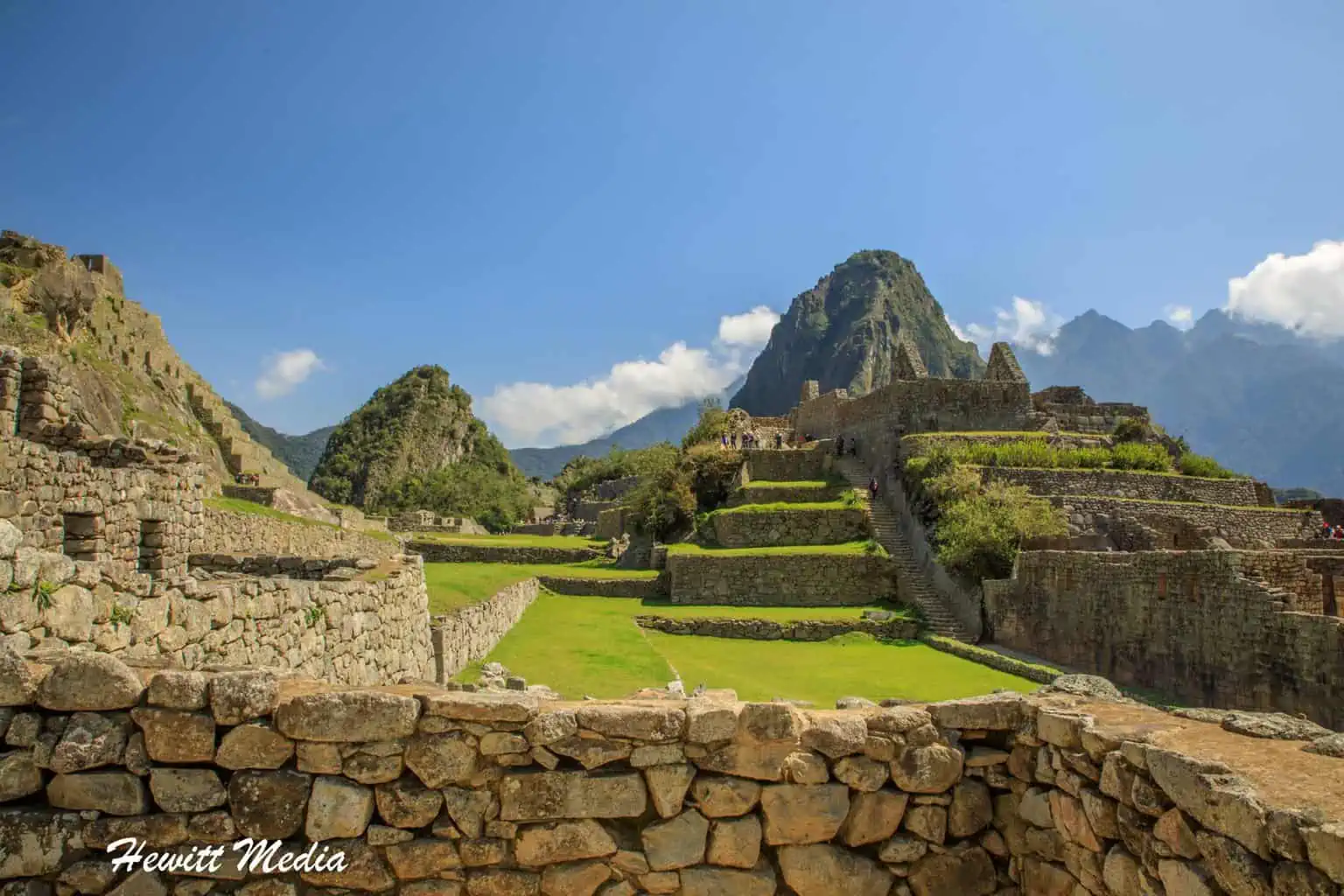
One of the best pieces of advice I can give you is to have a wide-angle lens. There will be many instances where you will be up close to or in tight with the subject material that you want to photograph. In these instances, it will be nearly impossible to fully capture the subject matter unless you have a wide-angle lens.
Wide Angle Lenses are Especially Important if Your Camera Has a Crop Sensor
This is especially important if you are using a camera that has a crop sensor instead of a full-frame camera. If you aren’t familiar with the difference, a crop sensor automatically magnifies the image you are photographing. Depending on the camera, this can be by either a 1.3, 1.5- or 1.6-times magnification.
This magnification can have its advantages if you are trying to capture images that are far away. In this case, the default magnification provides more “reach” for your camera. However, if you are trying to photograph objects that are up close to you, then it can have its obvious disadvantages.

In the image above, I illustrate how using a full-frame versus a crop sensor camera can influence the type of shots you can get at Machu Picchu. The image I took was with a Canon 5d Mark IV camera, which has a full-frame sensor. You can see how much wider a profile the full-frame camera has than a crop sensor camera such as a Canon Rebel T7i with the same lens. I was able to capture much more of the landscape with a full-frame camera than I would have been able to with a camera with a crop sensor.
Plan Ahead to Ensure You Have the Necessary Lenses
Now, I am not saying you need to invest in an expensive full-frame DSLR to be able to properly capture Machu Picchu. However, I am saying that you will need to plan ahead to make sure you have the necessary wide-angle lens, especially if you are using a camera with a crop sensor. To give you an idea of what I would recommend for a minimum focal range for different types of cameras, I have included some recommendations below for you to review.
- Full Frame Cameras: Minimum focal range of 20-28mm
- 1.3x Crop Sensor Cameras: Minimum focal range of 14-22mm
- 1.5x Crop Sensor Cameras: Minimum focal range of 12-20mm
- 1.6x Crop Sensor Cameras: Minimum focal range of 10-18mm
Don’t Miss the Money Shot
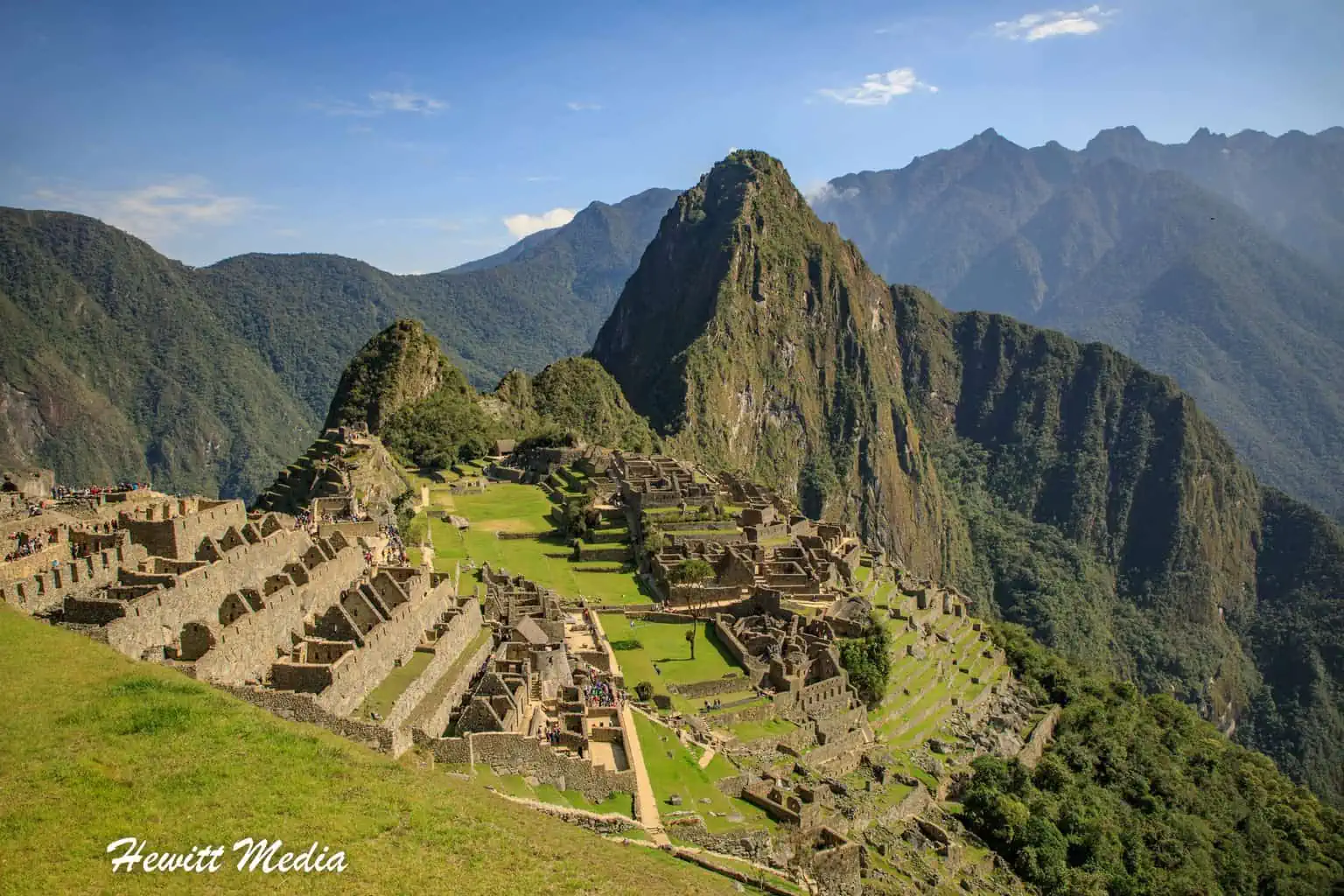
No photography trip to Machu Picchu isn’t complete without getting one of the most popular shots you can take at the site, which is near the La Casa del Guardián at the entrance of Machu Picchu. This shot, which I have included above for you to reference, is without a doubt the most popular shot taken at Machu Picchu.
In this shot, you can get the ruins as well as the beautiful peaks of Huayna Picchu and the Andes Mountain range in the background. This is a great opportunity to get your picture taken with the ruins in the background.
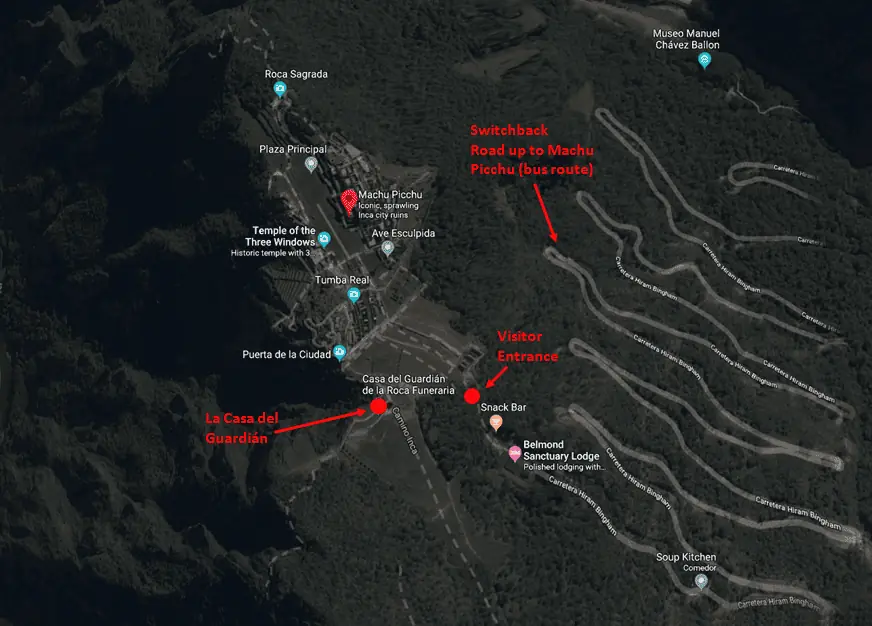
How to Get to This Photo Location
Once you enter Machu Picchu, you will want to take your first left to go up in elevation towards the Casa del Guardián, as illustrated in the detailed map I have included below. There will typically be a line of people waiting to get a shot at this location so you may have to be patient and wait for your opportunity to take pictures here. For this reason, I would suggest heading to this location immediately upon entering the site so that you have ample time to get the shots you want.

If you would like to learn more about how I planned my shots at this location, as well as how I typically research and plan my travel shots before traveling, I wrote a fairly in-depth article on my shot planning process in a previous Art of Travel Photography post. I suggest you check it out as I have found that being prepared and knowing which type of shots you want to take before you travel has helped me improve my travel photography immensely.
| READ MORE: |
 |
| Planning Your Travel Photos |
Work Wildlife In
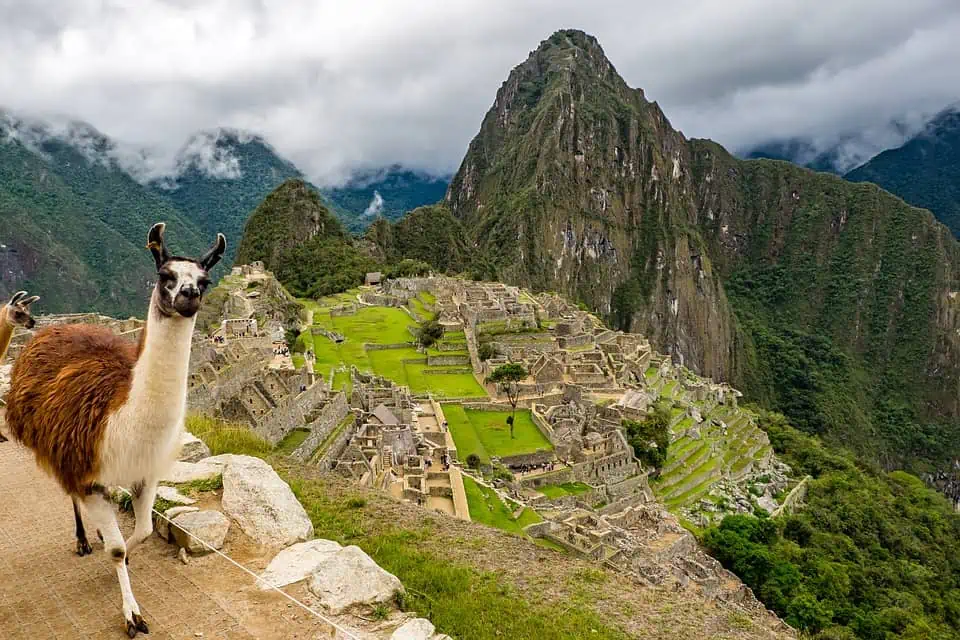
When you are busy snapping photographs at Machu Picchu, it is easy to get fixated on the beautiful mountain peaks and the ruins and not notice some of the amazing wildlife that calls this part of the world their home. Most notable among the wildlife are the alpacas and llamas that can be found grazing on the terraces of Machu Picchu. I would suggest that you keep a lookout for these interesting and adorable creatures and try to work them into your shots when possible. They can really enhance your photographs.
No Creative Photography Doesn’t Mean Don’t Be Creative
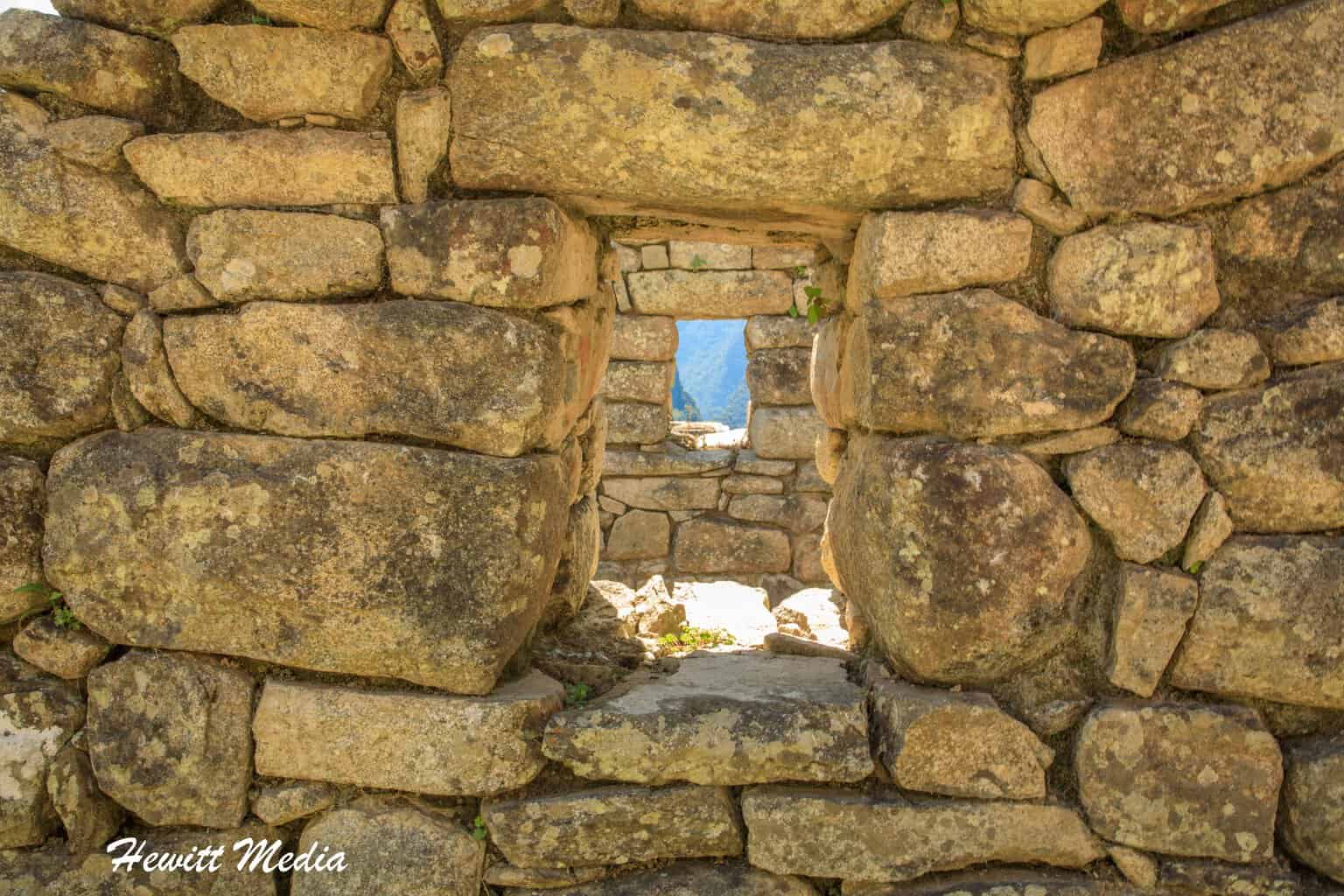
Just because staging photographs is prohibited at Machu Picchu, that doesn’t mean you have no creative license to use the features of the ruins and mountains to take some creative shots. When you are taking pictures at Machu Picchu, you can use the windows and doorways in the ruins, as well as walls, pathways, and the gorgeous Andes Mountains themselves to take some creative shots. For some additional inspiration, I would suggest doing a search on Pinterest and Instagram before your trip to see some of the creative shots that other travelers were able to capture during their visit.
Don’t Put the Camera Away on the Journey
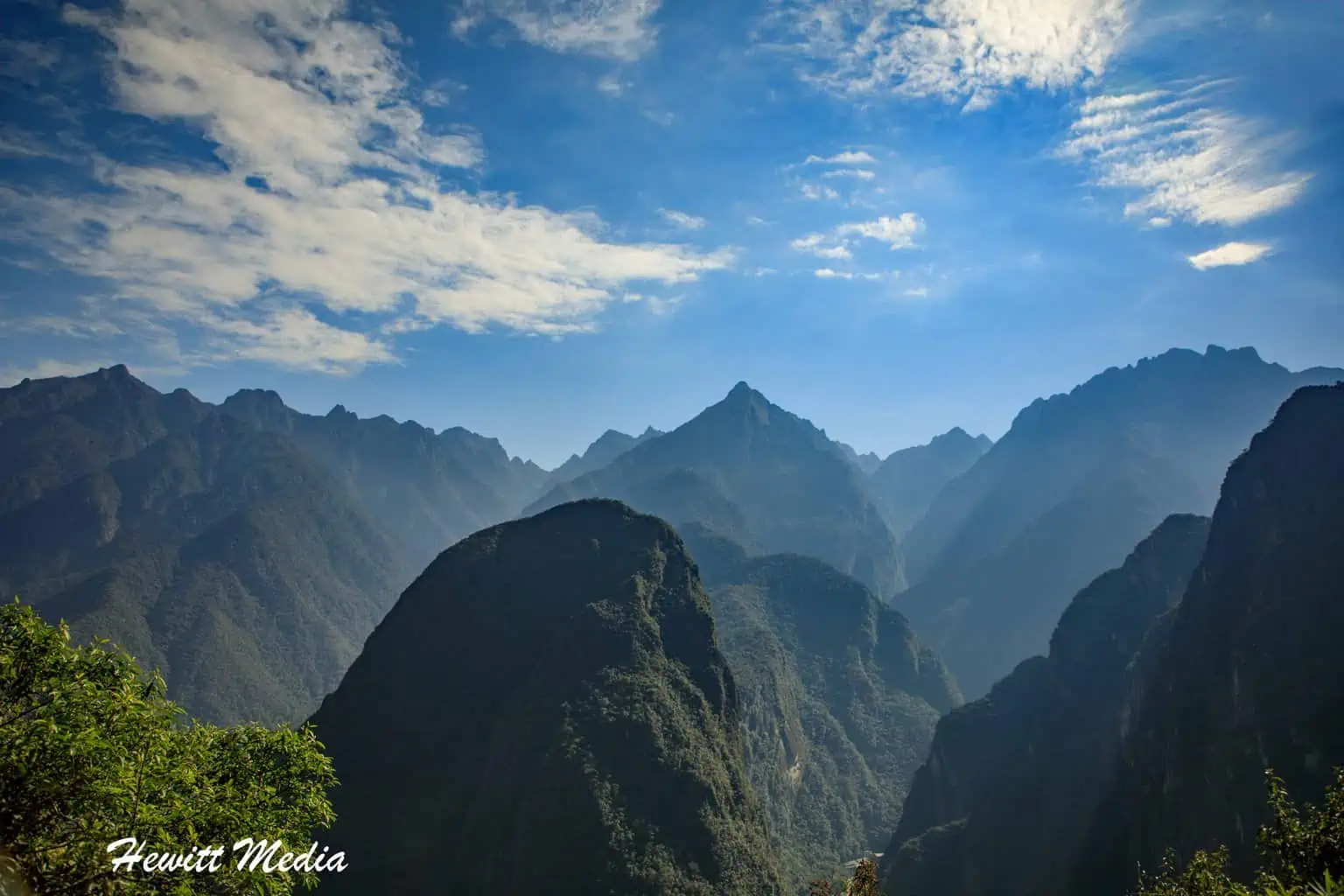
One mistake that I see people make often when I travel, and this isn’t isolated to just Machu Picchu, is to keep their camera or video camera stored away until they arrive at their destination. The area surrounding Machu Picchu is breathtakingly beautiful, and there are so many great photo opportunities you will have before you even arrive at the entrance gate.
For instance, the beautiful photo of the Andes Mountains above is a photo I took before I even got to the gates of Machu Picchu. So keep that camera out during your entire journey because you never know when you will have an opportunity to capture something amazing or beautiful and you won’t want to miss it.
Climb Huayna Picchu Early

If you are planning on hiking up Huayna Picchu, which is the mountain that can be seen behind the ruins in most pictures, then I would strongly suggest that you try and purchase a pass to hike the mountain in the morning as opposed to the afternoon. If you take a look at The Photographer’s Ephemeris (TPE) for Machu Picchu (as shown below), you will see that the peak of Huayna Picchu is the perfect location to shoot a sunrise over the ruins of Machu Picchu.
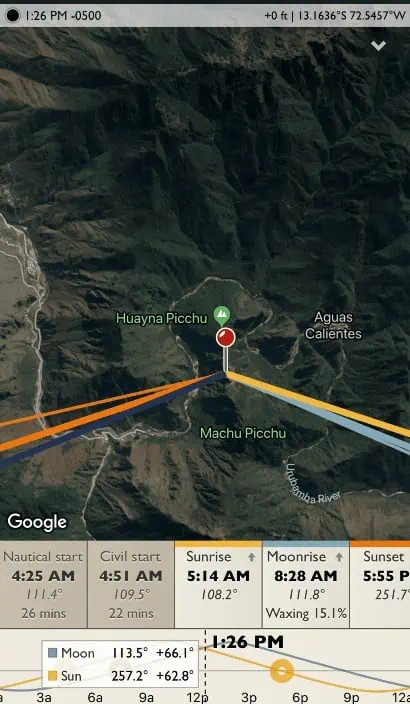
However, by mid-day, the sun will be overhead and the harsh mid-day sunlight will make capturing good images of the ruins from the peak of Huayna Picchu difficult. This is why I recommend hiking up Huayna Picchu early in the morning and then having the rest of your allotted time available to tour and capture the ruins themselves.
Know the Best Spots to Photograph the Ruins

In case you are interested in some additional spots I recommend for photos, I have included a map below that details some of my favorite spots. If you have some additional spots you would recommend for readers, please feel free to leave your tips in the comments section. I am sure other travelers would greatly appreciate the tips!

Machu Picchu Photography Guide – What Gear to Pack
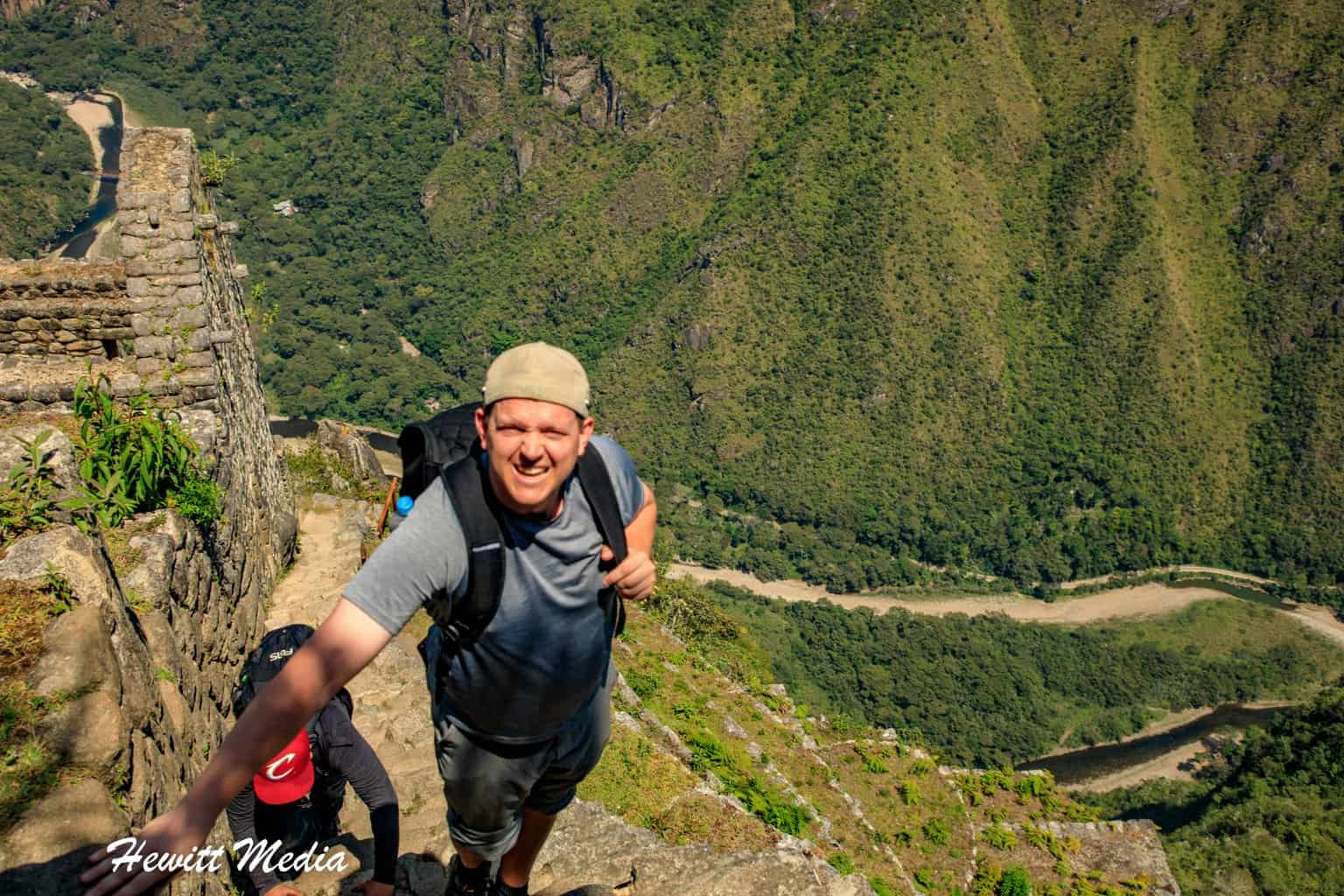
When you visit Machu Picchu, you are going to want to make sure you have the right gear with you to be able to take the best pictures of the site. However, you are also going to want to make sure you only have the gear that you will need because you will have to lug whatever gear you bring along with you on the paths and steep steps inside the ruins.
Believe me when I say that you will feel every pound that you carry because of the altitude. To assist you in determining what equipment you will want to bring, and what you can leave behind, I have put together a list of essential photography equipment for photographing Machu Picchu that I outline below.
Digital Camera
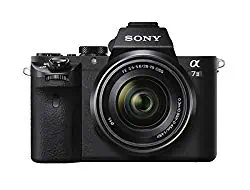 | You will want to balance quality versus weight here. I would suggest bringing your DSLR if you have one because of the quality of shots that they take, but if you have a mirrorless camera that is probably ideal because they are much lighter and take high-quality shots. |
Wide Angle Lens
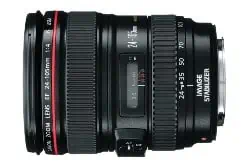 | A wide-angle lens is critical for capturing all of the wide shots in close quarters that you will be taking at Machu Picchu. Not only do they help you in photographing the ruins themselves as you take your tour, but a wide-angle lens will allow you to capture the wide landscape shots that you want to take as well. I recommend a minimum focal length of 20-28mm for full frame cameras and a 10-22mm minimum focal length of crop sensor cameras (depending on your crop sensor). |
Extra Batteries
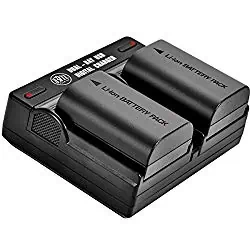 | You will want to make sure you have enough battery life to take shots, not only while you are at Machu Picchu, but on your journey along the way. For this reason, I would bring a few extra charged batteries in your bag when you make your trip. |
Lens Hood
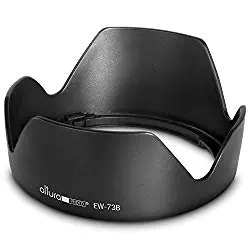 | It can get really bright at mid-day at Machu Picchu, so you are going to want to have a way to protect against lens flaring. One of the best ways to do this is to have a quality lens hood for your lenses. |
Small Tripod (if you bring one at all)
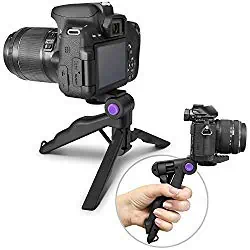 | Tripods are prohibited in Machu Picchu without the proper permit because they are considered “professional” photography gear, but you can bring in very small tripods such as the UBeesize 12 Inch Mini Tripod, Altura Photo Mini Tripod, and RetiCAM Tabletop Tripod. I would not attempt to bring in any tripod that is larger than these. |
Camera Backpack
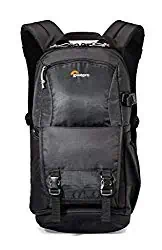 | Any bag that you bring into Machu Picchu will need to be smaller than 40x35x20cm, so plan accordingly when preparing for your trip. Bags that are larger than this will need to be checked at the entrance, along with any equipment that you can’t carry with you. I recommend the Lowepro Fastpack BP 150 AW II – A Travel-Ready Backpack. It is small enough to bring into the site, very lightweight, and is well designed to maximize storage space. |
Polarizing Filter
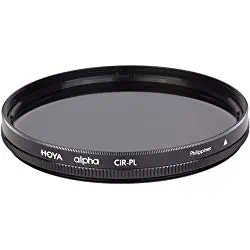 | Having a polarizing filter on your lens will be extremely helpful when shooting landscape shots at Machu Picchu. I kept mine on my wide angle lens the entire time I was at the site. |
Optional Equipment
Any additional equipment that you bring will need to fit inside your bag and you will have to carry its weight around with you while you visit, so make sure you choose your gear wisely. Below are some optional pieces of gear you might want to consider bringing.
- Zoom lens (200-300mm maximum focal length). A wide-angle lens will be far more valuable at Machu Picchu, but you may want to photograph wildlife or other subjects that require more reach.
- Battery Grip. Having a battery grip will allow you to go longer without having to change batteries (as most hold two at a time), and they also make taking portrait shots much easier because of the more convenient shutter button location.
- Light meter. Having a light meter can be helpful when trying to adjust to the ever-changing light conditions you will find at Machu Picchu.
Don’t Forget to Subscribe to My Adventures!

Let Me Help You Save On Your Next Adventure!
‘Start Exploring Today’ Merchandise Available Now!






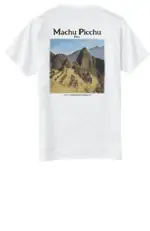
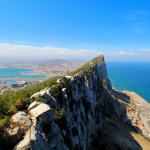
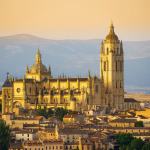


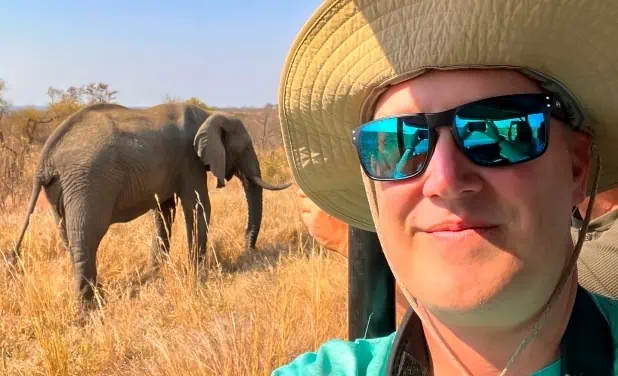
Wonderful and informative post! I’m still learning how to use my polarizing filter effectively. I love the tips!
Thank you for the kind words Matthew!! Glad you found the article helpful. Thanks for reading!!
What a great and informative article. You have some great shots of Machu Pichu here, and some great tips on how to get them. Thanks for the advice.
Thank you so much for the kind words Jeff! Thanks for reading!
Oh wow this was so wonderful and helpful! Thank you, your experience really shows!
If I am allowed to suggest, this was kinda a lot to rad and had many different elements; maybe split this (or posts like this one) into several instead? People today have shorter attention stands and would like something quick to “nibble one” of you will. Keep it up, your doing an awesome job! 😀
Thank you for the kind words and the great feedback! I will keep that in mins when I write my next photography guides 😀👍
Drones are Not Prohibited? Typo?
Yes, drones ARE prohibited. Thank you.
Thank you for your valuable tips
You are so very welcome! Thank you for reading!!
Olympus m1 mark2 lens12-40 mm f2.8 is it good for photography?
Hi Olivia! I shoot with Canon, so I am not super familiar with that lens, but it does have good reviews! The focus distance and speed would make it good for landscape and street photography. At f2.8, it should perform very well at lower light. You won’t have a lot of reach at a max focal length of 40mm, but unless you are photographing wildlife or need to zoom in really far, this shouldn’t be an issue.
Hope this helps!